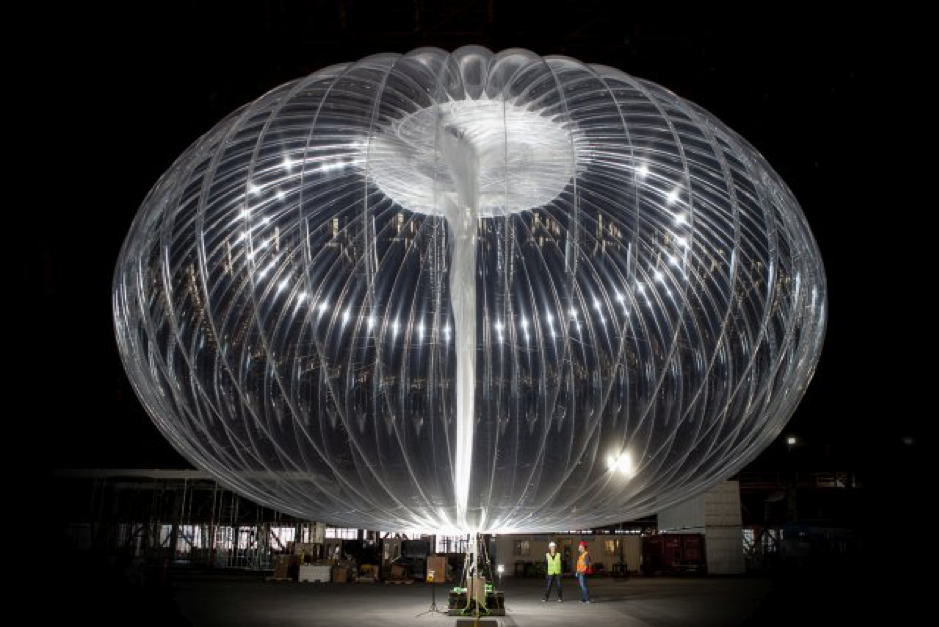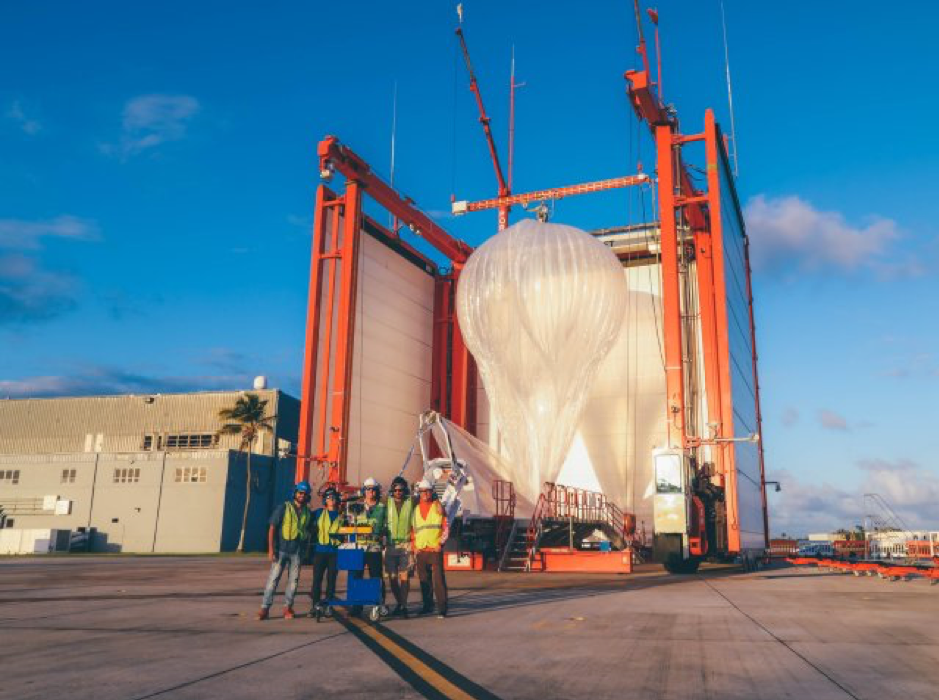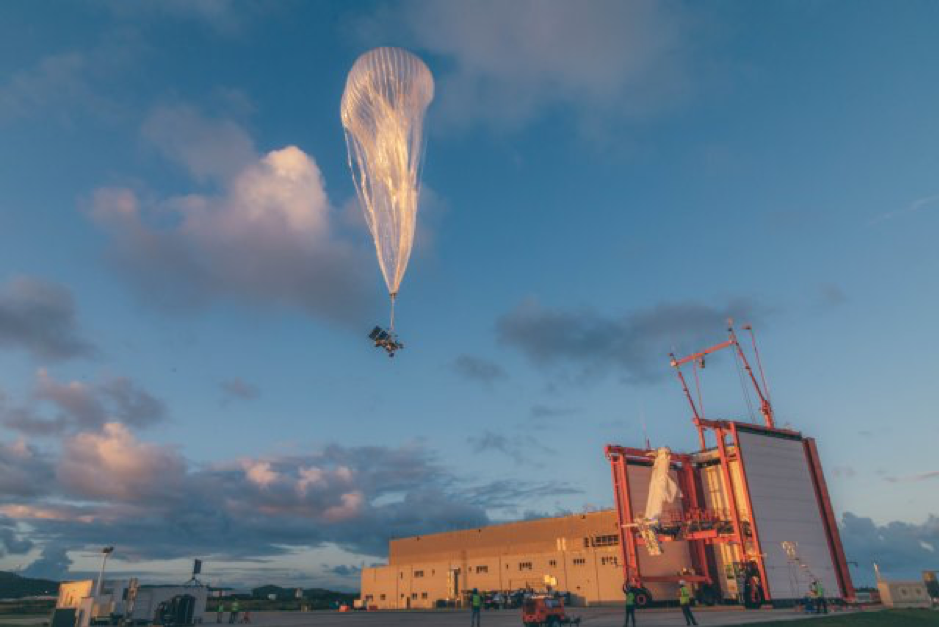What is Loon?
Loon is an Alphabet company based in Mountain View, California in the United States. Loon’s aim is to bridge the digital divide through the use of balloons traveling on the edge of space. Loon is a prime example of green technology entrepreneurship – creating and applying radical new technologies to solve real world global problems.
How does Loon work?
Loon balloons travel in the stratosphere, acting as floating cell towers, to deliver connectivity to people in unserved and underserved areas around the world. Loon’s balloons are made from sheets of custom-developed polyethylene. Each tennis court-sized balloon is built to last more than 150 days in the stratosphere before landing back on Earth in a controlled descent. A Loon balloon recetly passed the 223 day milestone, breaking the previous record of 198 days. Loon balloons are designed and manufactured to endure the harsh conditions in the stratosphere, where winds can blow over 100 kilometers per hour, and temperatures can drop as low as -90 celsius.

A Moonshot from California
Prior to July 2018, when Loon became an independent company as part of Alphabet, the parent company of Google, Loon began its life as “Project Loon” at Google X, the Moonshot Factory. Google X’s mission is to create radical new technologies to solve some of the world’s hardest problems.
One of the world’s hardest problems is that traditional, ground-based infrastructure is limited in its ability to provide Internet access to those in remote or hard-to-cover areas. Additionally, traditional ground-based infrastructure is vulnerable to destruction in natural disasters. Because Loon’s balloons navigate wind currents 20 kilometers above the Earth, they can be arranged in small clusters to provide periods of prolonged connectivity down below. What started as an idea at the Moonshot Factory several years ago has come a long way: Loon balloons have flown over one million hours in Earth’s stratosphere. In all of those hours aloft, Loon’s balloons have traveled nearly 40 million kilometers — enough to make 100 trips to the moon or circle the Earth 1,000 times.’
Partnering with Mobile Network Operators
Loon itself is not a telecommunications service provider. Loon We partners with Mobile Network Operators (MNOs) to expand the reach of their service. The MNO has the customer relationship, while Loon serves as the infrastructure provider or “cell tower in the sky.” Together, they help expand coverage into remote and rural locations, upgrade existing networks, and also provide expedient coverage after natural disasters.
How do users receive their Internet connectivity via Loon balloons?
A wireless Internet signal is transmitted to the nearest Loon balloon from the MNO partner on the ground using a Loon-provided ground station. That signal is relayed across the Loon balloon network and down to users on the ground. In order for users to connect to the Internet whenever a Loon balloon is overhead, they need the sim card of the MNO partner in that country and a standard LTE handset. Each balloon has a coverage area of around 5,000 square kilometers, which is significantly greater than traditional ground-based cell towers, which have a reach of about 50 square kilometers. At the time of writing, Loon are preparing to deploy commercial service in Kenya with their partner, Telkom Kenya. In Peru, Loon were able to deliver support in the Loreto region with partner Telefonica, after a recent earthquake. Loon were also able to provide service after Peru’s devastating 2017 floods. And this is just the beginning – Loon is constantly talking to MNOs around the world about potential partnerships.

Ready, Set, Launch!
Loon have developed flight equipment (also known as the “payload”) for balloons that is highly energy efficient and is powered by renewable energy. Solar panels power the system during the day while charging an onboard battery to allow for night-time operations. The balloons also carry the antennas that transmit connectivity from ground stations, across a balloon mesh network, and back down to the user’s LTE phone. The flight capsule holds the brains that command and control the Loon system. A parachute automatically deploys to guide the balloon safely back to Earth after its flight.
Balloons are launched from sites in Nevada and Puerto Rico, depending on the winds. Custom-built, two-story tall Autolaunchers are designed to launch Loon balloons safely and reliably at scale. Side panels protect the balloon from the wind as it is filled with lift gas and positioned for launch. A crane points downwind to smoothly release the Loon balloon up into the stratosphere. Each launcher is capable of launching a new balloon into the Loon network every 30 minutes.
Navigating the Wind
Loon balloons can reach countries around the world from the launch sites by navigating the wind. In the stratosphere, different wind currents exist at different altitudes. By moving up or down into these different currents, balloons can change speed and direction and navigate to where they are needed. Predictive models of the winds and autonomous decision-making algorithms help the balloons navigate efficiently. Loon’s entire navigation system functions autonomously using our custom software. By moving with the wind, Loon balloons can be arranged into small clusters to provide periods of prolonged connectivity in a defined area. One balloon moves into place just as another one leaves.
Originally, Loon envisioned creating rings of balloons sailing around the globe, and balloons would take turns moving through a region to provide service. Advances in the understanding of wind currents in the stratosphere, combined with improvements to the software algorithms that help balloons navigate, have allowed balloons to be clustered over specific areas. This helps maximize the time balloons spend over areas where people need service. In fact, during a test in 2016, Loon engineers managed to keep a balloon in Peruvian airspace for 98 days. The team has since improved on these techniques to increase the amount of time one balloon can remain over areas needing service.

Aviation Safety – Priority Number One
Loon operates at an altitude nearly twice as high as commercial aircraft. Loon therefore secures all the necessary approvals in all locations where they operate. Safety is critically important and the company adheres to or exceed the international standards for unmanned free balloons set by the United Nations’ International Civil Aviation Organization’s (ICAO). These ICAO standards are recognized by the vast majority of countries around the world. Loon maintains continuous telemetry and command links with every balloon, tracking the location using GPS. When a balloon is ready to be taken out of service, the lift gas keeping the balloon aloft is released and the parachute automatically deploys to control the landing. Descents are coordinated with local air traffic control to land the balloon safely in a sparsely populated area. A team in Mountain View is dedicated to managing balloon retrieval and analyzing the balloons when they return, and there are trained recovery teams around the world, on call to retrieve the balloons for reuse and recycling after they land.

Julie Kearney, Global Head of Communications Regulation and Policy, Project LOON
Julie Kearney is Global Head of Communication and Regulatory Policy at Loon, where she leads the company’s U.S. and international regulatory initiatives. Loon is working to bring internet access to unserved and underserved communities around the world via a network of balloons traveling on the edge of space. Loon is a subsidiary of Alphabet.
Prior to joining Loon, Julie was VP of Regulatory Affairs for the Consumer Technology Association (CTA). She previously served in government affairs at NPR, in MCI’s International Affairs group, and as an associate at Haley Bader & Potts (now Garvey Schubert Barer).
Julie is a recent Past President of the Federal Communications Bar Association (FCBA) and is a past chair of the FCBA Foundation. She served seven terms on the Federal Communications Commission’s Consumer Advisory Committee and currently serves on its Broadband Deployment Advisory Committee.
Kearney earned her B.A. from Mount Holyoke College and a J.D. from Catholic University’s Columbus School of Law with a certificate from its Law and Technology Institute. She currently serves on the Columbus School of Law’s Board of Visitors. A trained singer, Kearney sings with the “kindie” rock band, “Here Comes Trouble.” She also has sung with many choruses in the Washington, DC area, most recently with the Choral Arts Society of Washington.



